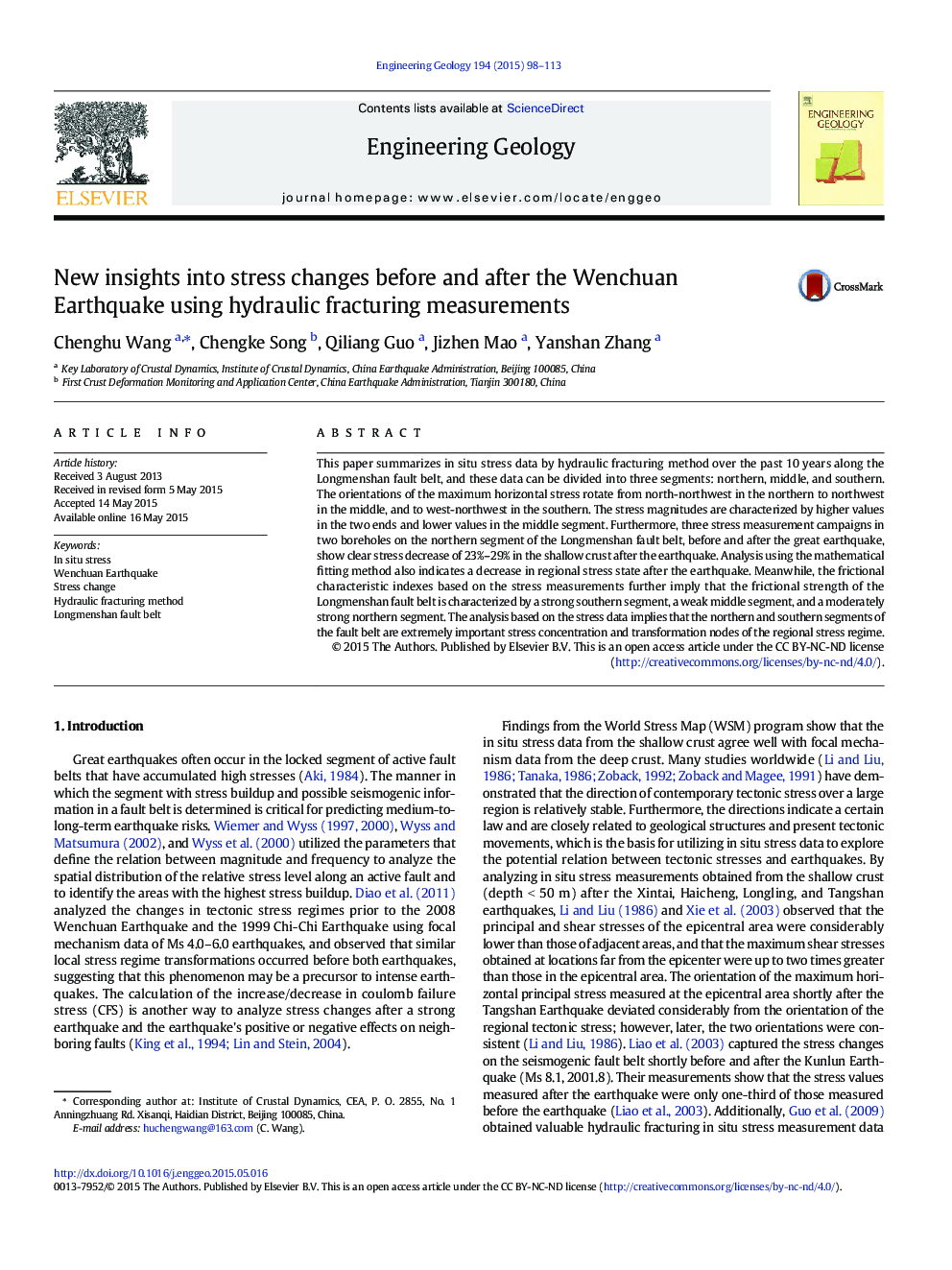| Article ID | Journal | Published Year | Pages | File Type |
|---|---|---|---|---|
| 6447803 | Engineering Geology | 2015 | 16 Pages |
Abstract
This paper summarizes in situ stress data by hydraulic fracturing method over the past 10Â years along the Longmenshan fault belt, and these data can be divided into three segments: northern, middle, and southern. The orientations of the maximum horizontal stress rotate from north-northwest in the northern to northwest in the middle, and to west-northwest in the southern. The stress magnitudes are characterized by higher values in the two ends and lower values in the middle segment. Furthermore, three stress measurement campaigns in two boreholes on the northern segment of the Longmenshan fault belt, before and after the great earthquake, show clear stress decrease of 23%-29% in the shallow crust after the earthquake. Analysis using the mathematical fitting method also indicates a decrease in regional stress state after the earthquake. Meanwhile, the frictional characteristic indexes based on the stress measurements further imply that the frictional strength of the Longmenshan fault belt is characterized by a strong southern segment, a weak middle segment, and a moderately strong northern segment. The analysis based on the stress data implies that the northern and southern segments of the fault belt are extremely important stress concentration and transformation nodes of the regional stress regime.
Related Topics
Physical Sciences and Engineering
Earth and Planetary Sciences
Geotechnical Engineering and Engineering Geology
Authors
Chenghu Wang, Chengke Song, Qiliang Guo, Jizhen Mao, Yanshan Zhang,
